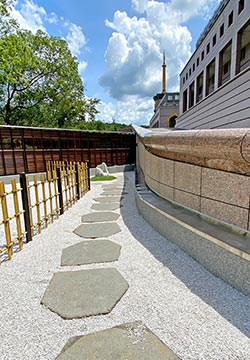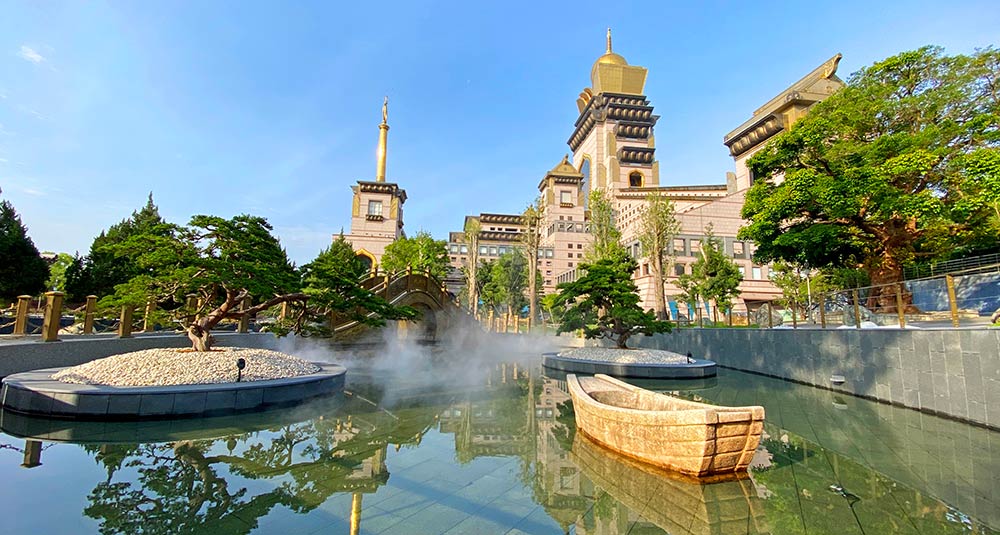
Crossing over from Youshan Pedestrian Bridge, visitors pass through a shady grove of Mexican cypress trees to arrive at Unity Bridge Park. The first thing they see is Chung Tai World Museum’s decorated archway, or pailou, standing in a garden square, a perfect place for enjoying the scenery or taking pictures. Designed specifically for pedestrian safety, the garden provides an enclosed space where large crowds can gather, safely sequestered from the busy street nearby. It is a practical yet elegant way to welcome visitors to Chung Tai, as warmly as if they were returning home.
Entering through the archway, visitors are immediately greeted by the castle-like façade of the Chung Tai World Museum Wood Sculpture Gallery. The Gallery exhibits Buddhist wood sculptures from as early as the Tang Dynasty, spanning thousands of years of Buddhist history. Its extensive collection invites visitors to enter and experience the rich, diverse, profound world of Buddhist art and culture.
Before the Wood Sculpture Gallery, a courtyard segues into the spacious Unity Bridge Park, whose namesake bridge arches over a large pond, with a stone boat parked quietly among its waters. Guanyin Pavilion and a Japanese Zen garden are also found nearby. Lushly planted with pine and gingko trees, Unity Bridge Park evokes the monasteries of ancient China, where it was said, “Plant trees to make a grove; cover a swift river with bridges and boats. Trees bring coolness and shade; bridges and boats help people cross the water.” In this spirit, Unity Bridge Park embodies the compassionate vow of a bodhisattva to protect and care for all sentient beings.
Dharma from a common lineage; a common vow to liberate sentient beings.
“A golden bridge connects two shores; the distance between delusion and enlightenment is a single instant.” The ancients stacked stones and hammered wood to bridge the distance between shores. Bodhisattvas build Dharma bridges so sentient beings can cross over to nirvana.
Unity Bridge Park originates from the affinity between Chung Tai Chan Monastery and Lingyin Temple in Hangzhou, China. Unity Bridge was a gift from Lingyin Temple, in celebration of the two monasteries’ common lineage. Known as “Tongyuan Qiao” in Chinese, its name means literally “from the same origin.” Thus, in honor of the gift, Chung Tai built Unity Bridge Park. The golden bridge symbolizes the shared roots of the two monasteries, and also Buddhism’s common goal to bring all sentient beings to nirvana.
1
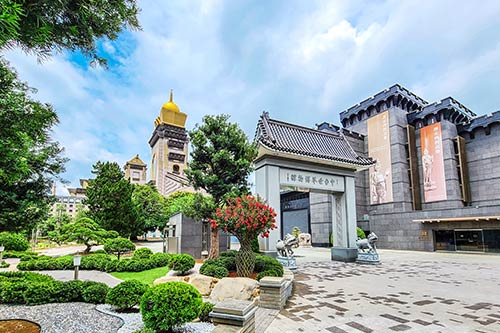
2
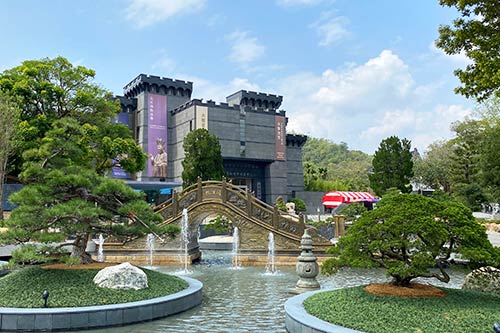
3
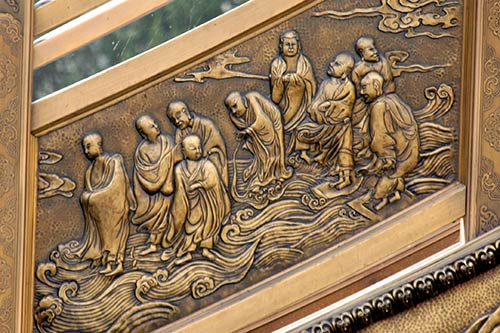
4
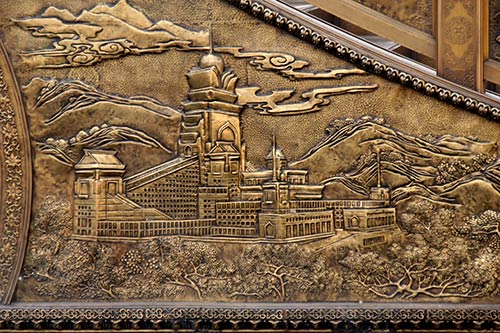
5
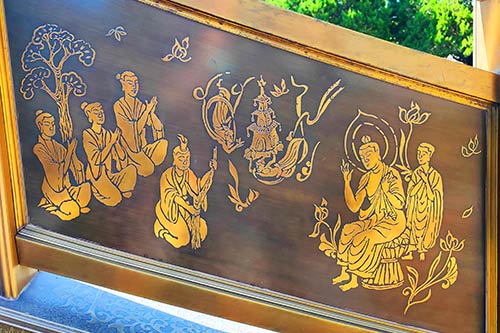
6
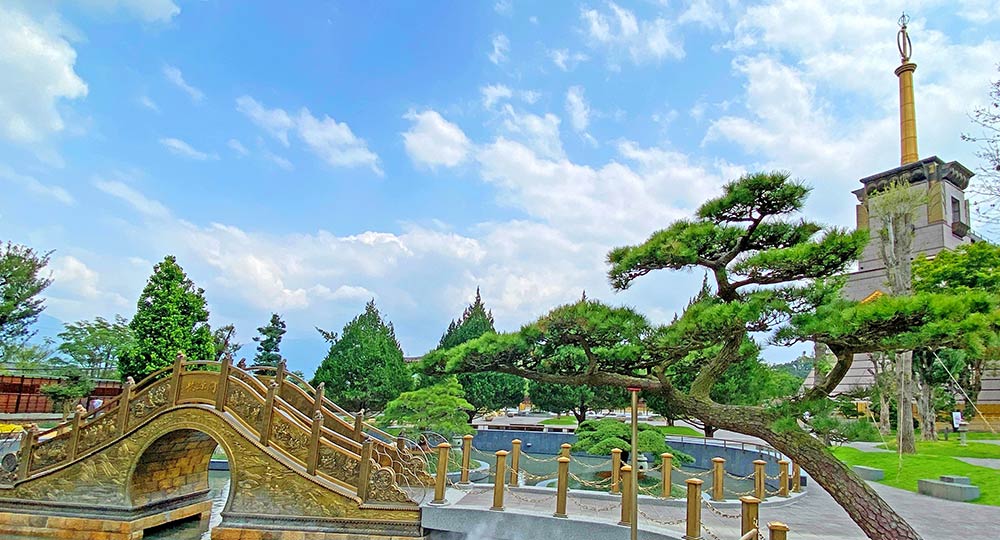
Exquisitely decorated with bronze relief work, the inner panels of Unity Bridge are covered with depictions of the Buddha’s practice of the six paramitas, while its outer sides feature images of the 108 Arhats. Its stairs are embellished with lotus flowers, representing the pure path to a buddha land. Surrounding the bridge, planted in the pond and along its banks, are pines and junipers, their reflections dancing on the water among the fountains and mist. Observing from atop the bridge, visitors can appreciate the serenity and beauty of Unity Bridge Park.
A stone boat sits quietly in the pond. The sutras say, “Strive to build Dharma boats and erect Dharma bridges, saving all beings from the torrent of life and death.” Bodhisattvas manifest in the world because of sentient beings. In the Buddhist sutras, bridges and boats are often metaphors for a bodhisattva’s compassionate vows and actions. We hope that everybody can carry a “Unity Bridge” in our hearts, encouraging us to communicate with and trust each other, to be in harmony with and help each other. May all Buddhist disciples be united and build great Dharma bridges and Dharma boats, carrying sentient beings out of the ocean of suffering, onto the shore of enlightenment.
With a deep compassionate vow, Guanyin Bodhisattva works to alleviate all suffering.
“Hearing a thousand prayers and answering a thousand times, like a vessel, she carries people from the sea of suffering.” Guanyin Bodhisattva perceives the sounds of the world to alleviate the suffering of those in need. Through the power of compassionate resonance, she helps all beings according to their karma. Because of this, Guanyin Bodhisattva is a source of faith for disciples across many Buddhist traditions. Guanyin Pavilion in Unity Bridge Park is a place for visitors to pay homage to this Bodhisattva. Standing serenely on a lotus pedestal, Guanyin holds a vase of purity in one hand and a willow branch in the other. With these Dharma instruments, she sprinkles sweet dew to douse the afflictions of sentient beings. Behind her is a lotus flower ornament and the Guanyin Bodhisattva Gatha:
Guanyin Bodhisattva’s inconceivable wonder,
Purity and virtue cultivated for endless kalpas.
Manifesting thirty-two transformations across the realms,
She saves Jambudvipa beings over endless kalpas.
Sweet dew flows from her vase,
Raining from the willow branch, ageless in her hands.
Hearing a thousand prayers, answering a thousand times,
Like a vessel, she carries people from the sea of suffering.”
The pavilion commemorates the infinite wisdom and compassion of Guanyin Bodhisattva.
In front of the pavilion, lotus flowers float inside of a hollow stone—they are offerings to Guanyin, immaculate, untainted by the muddy water from which they emerge. Buddhist culture ascribes profound meaning to the lotus flower, which symbolizes the original pure nature inherent to all beings. Since ancient times, Buddhist temples have often planted lotus flowers; the lotus image is also a common motif representing purity in Buddhist art and architecture. We hope the intrinsic lotus of the pure mind and self-nature will bloom in the hearts of all visitors.
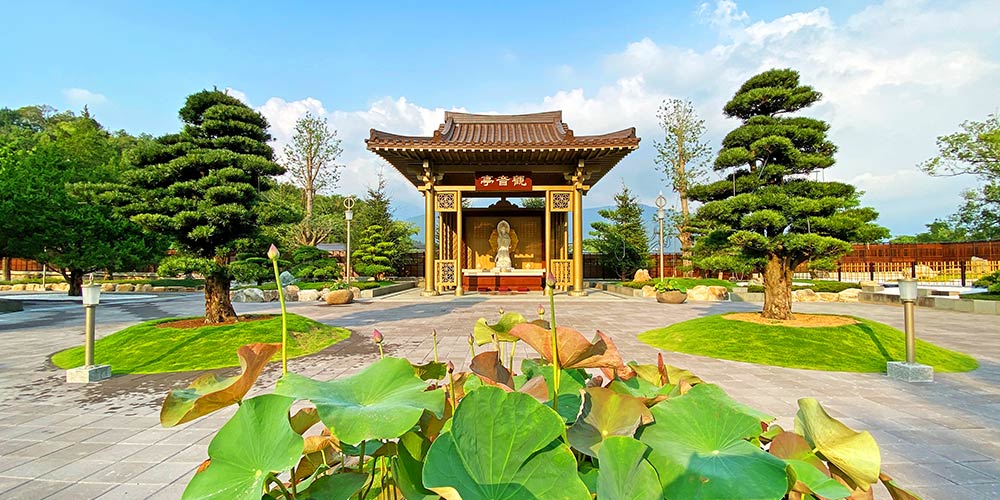
In the garden there is a Pavilion of Guanyin; it was built for visitors to pay respect to her. In front of the pavilion, lotus flowers are planted as offerings to the Bodhisattva.
A monastery garden is a lesson for posterity.
Unity Bridge Park is full of trees and foliage: Buddhist pines, dragon junipers, and ginkgo trees stand tall and strong; bodhi trees and autumn maples provide abundant shade. Chinese culture prizes these trees for their longevity: “Pine trees stand for a thousand years; junipers stand for ten thousand.” Widely planted by monasteries since ancient times, they have come to represent Buddhism’s long history and enduring legacy.
The Park also features a Japanese Zen garden. Intended as a quiet place for reflection and contemplation, the garden was created by covering the ground with fine sand and crushed stones, then carefully placing decorative rocks. The rocks represent mountains while the sand symbolizes water. Subtle patterns are sometimes brushed into the sand to evoke the flowing of water. The Zen garden is minimal yet rich in meaning, resembling an East Asian landscape painting where the negative space leaves viewers with ample room for reflection. In the same way, the garden reveals the deep teaching of Chan.
1
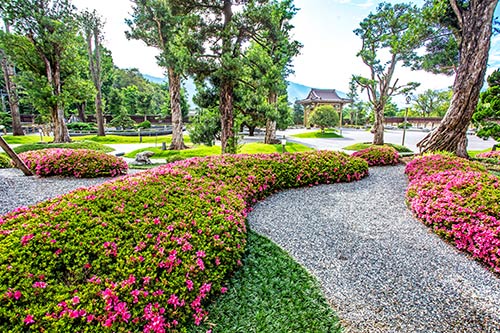
2

3
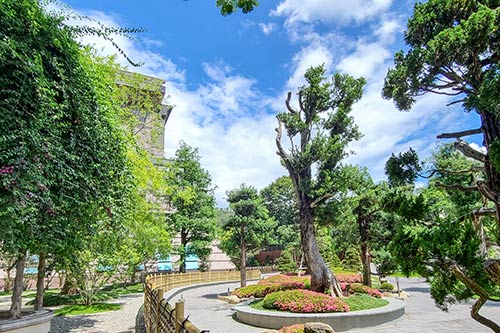
4
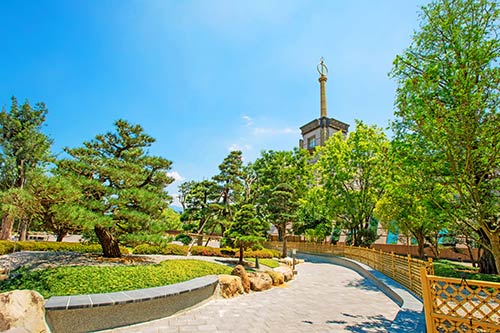
5
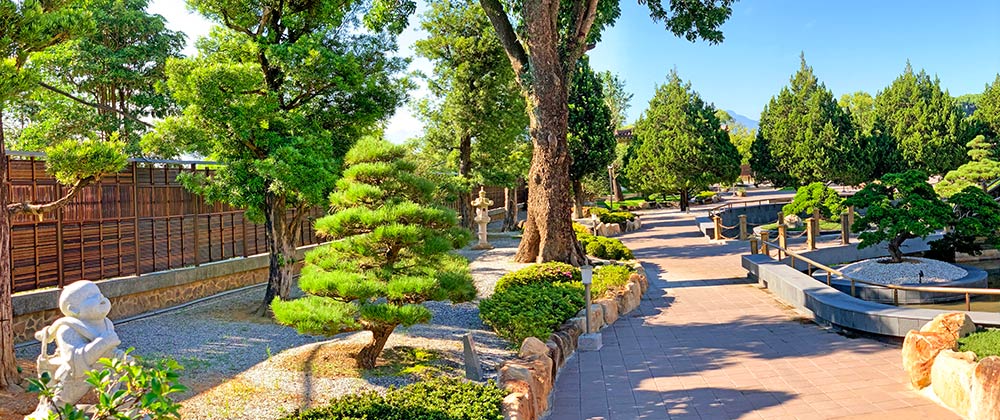
Unity Bridge Park provides visitors with a safe and comfortable environment to explore the Buddhadharma. The park beautifies the monastery while also serving as an example of bodhisattva practice for posterity; it is practical as well as meaningful. We hope that while enjoying the garden, trees, and statues, visitors will plant the seeds of enlightenment in their hearts so they will grow and flourish, providing blessings and peace to all.
1
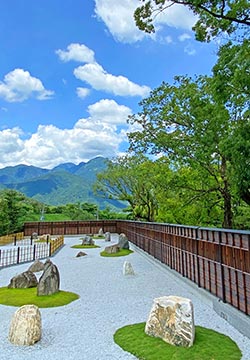
2
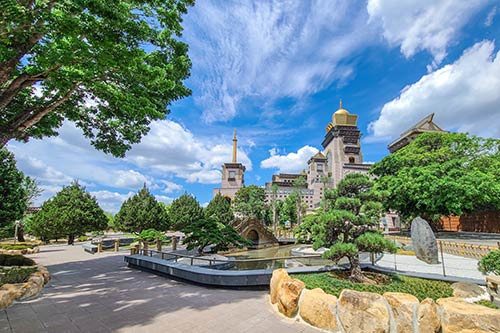
3
